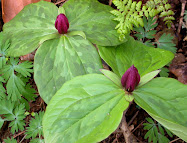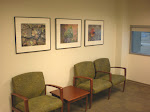There are several Buffalo Jumps in Montana but Madison Buffalo Jump was more or less on the way to Glacier my next National Park. A buffalo jump is a high ledge that the western native people used to help harvest buffalo for the winter.
This cliff was an important hunting tool used for communal bison hunting. Sosoni' speaking (Shoshone) probably used the jump most frequently, but over time many nations have call this area home. For days the entire camp plans and prepares for the upcoming hunt. Tools, weapons and hearths are ready. Ceremonies and personal rituals are performed. Many of the artifact such as arrow and spear heads, and pottery shards were found in the area.
Runners locate the heard and with their bodies covered in wolf skins they crouch and began to move the heard toward the cliff. After witnessing a buffalo drive in 1776, fur trader Alexander Haney wrote, "The Indians' gestures so closely resemble those of the animals that if I had not been in the secret, I would have been as deceived as the buffalo." As they move the heard onto the plateau, hazers hiding behind rocks jump up and begin shouting and waving hide. Below all eyes are fixed on the cliff ready for the stampede of bison of to fall to their death. Those below others move in to kill any injured animals.
Below the 30 foot cliff women began butchering and skinning the bison into manageable pieces. The large bones were cracked open and boiled to remove the nourishing marrow. Nothing was wasted. I think my camper was parked in one of the butchering sites. The majority of the meat was preserved for winter food. Long strips of meat were hung from pole racks to dry. Once dry, the meat was ground into small bits, mixed with the marrow and often chokecherries, buffalo berries or other fruits dried in the summer. The mixture was then spread out in sheets to dry and then cut into cakes. These energy bars, called pemmican, provided nourishment throughout the winter.
While I was there a park ranger came up the trail and told me the history of the area and offered suggestions for other places to visit while in the area. Besides a man and his son I was the only other person around and they soon left leaving the place to myself.
As I slowly drove back along the gravel road I noticed these cloud formations. I started to think that this was the place where photos were taken of clouds to study in textbooks. There was so much sky and the clouds kept changing.
Later I wrote in my journal: "I could see forever and what I saw was rolling hills of grass, foothills sage green with that wonderful smell of herb and blue mountains and snow covered peaks. Occasionally cattle dotted the landscape but they could have just as easily been buffalo. I felt like it had always been this way but now instead of wagon ruts there was a 2 lane road.
"There is more than what you see here." -- Tony Icashula, Pend d'Oreille




































































+DSCN5800+for+blog.jpg)



